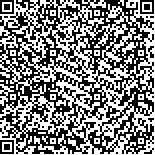朱美红,包红静,陈林林,等.基于镜像神经元理论的手-脑感知及手-脑运动训练对脑卒中后上肢功能恢复的影响[J].中华物理医学与康复杂志,2024,46(10):887-892
扫码阅读全文

|
| 基于镜像神经元理论的手-脑感知及手-脑运动训练对脑卒中后上肢功能恢复的影响 |
|
| |
| DOI:10.3760/cma.j.issn.0254-1424.2024.10.004 |
| 中文关键词: 脑卒中 上肢功能障碍 手-脑感知 手-脑运动 镜像神经元理论 |
| 英文关键词: Stroke Upper limb dysfunction Hand-brain perception Hand-brain movement Mirror neuron theory |
| 基金项目:嘉兴市科学技术局公益性研究计划项目(2022AY30029);浙江省医药卫生科技计划项目(2022KY387,2022KY386,2022KY385) |
|
| 摘要点击次数: 2482 |
| 全文下载次数: 2910 |
| 中文摘要: |
| 目的 探讨基于镜像神经元理论的手-脑感知联合手-脑运动训练对脑卒中后上肢功能恢复的影响。 方法 采用随机数字表法将105例脑卒中后上肢功能障碍患者分为手-脑感知组、手-脑运动组及联合组,每组35例。3组患者均给予常规康复干预(包括运动疗法、作业治疗、物理因子治疗等),在此基础上手-脑感知组、手-脑运动组分别辅以手-脑感知训练、手-脑运动训练,联合组则辅以手-脑感知及手-脑运动联合训练。于干预前、干预4周后分别采用上肢简化Fugl-Meyer运动功能量表(FMA-UE)、触觉 Semmes Weinstein单丝检查(SWME)、改良Barthel指数(MBI)量表评价3组患者上肢运动功能、感觉功能及日常生活活动(ADL)能力改善情况。 结果 干预后3组患者FMA-UE、MBI评分及SWME分级均较治疗前明显提高(P<0.05);并且联合组FMA-UE、MBI评分[分别为29(18,47)分和(62.97±10.49)分]明显优于手-脑感知组及手-脑运动组(P<0.05)水平,联合组SWME分级亦显著优于手-脑运动组(P<0.05)水平。 结论 基于镜像神经元理论的手-脑感知联合手-脑运动训练能进一步促进脑卒中患者上肢感觉及运动功能恢复,该疗法值得临床推广、应用。 |
| 英文摘要: |
| Objective To explore the effect of combining hand-brain perception training with hand-brain motor training based on mirror neuron theory on the recovery of upper limb function after a stroke. Methods A group of 105 stroke survivors with upper limb dysfunction were randomly divided into a hand-brain perception (HP) group, a hand-brain motor (HM) group, and a combination (C) group, each of 35. In addition to conventional rehabilitation treatment (including exercise therapy, occupational therapy and physical factor therapy), the HP and HM groups were given hand-brain perception training and hand-brain motor training respectively, while group C was provided with both. Before the intervention and after 4 weeks, the upper limb motor functioning of all of the participants was assessed using the simplified version of the Fugl-Meyer upper limb motor function scale (FMA-UE). Sensory functioning was quantified using the tactile Semmes Weinstein monofilament examination (SWME), and the modified Barthel index (MBI) was used to quantify the participants′ ability in the activities of daily living. Results After the intervention the average FMA-UE, MBI and SWME scores of all three groups had improved significantly, with group C′s average FMA-UE and MBI scores significantly better than the other two groups′ averages. The average SWME score of group C was then significantly better than that of group HM. Conclusions Hand-brain perception combined with hand-brain motor training based on mirror neuron theory can further promote the recovery of upper limb sensory and motor functioning of stroke survivors., Such therapy is worthy of clinical promotion and application. |
|
查看全文
查看/发表评论 下载PDF阅读器 |
| 关闭 |